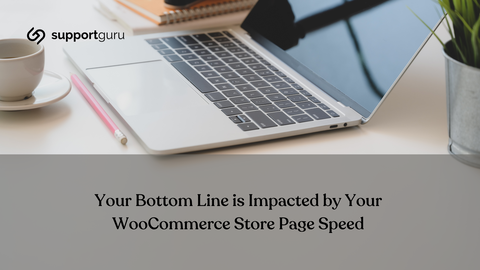In the competitive world of e-commerce, where every click, every page load, and every second counts, your WooCommerce page speed often gets overlooked.
It's the unsung hero of e-commerce success—the silent force that can make or break your online business and impact your bottom line.
Customer Expectations
Today's shoppers are impatient.
They expect fast, seamless experiences, and they have no problem taking their business elsewhere if their expectations aren't met.
According to a study by Google, 53% of mobile site visitors will leave a page if it takes longer than three seconds to load. And that's just the beginning.

-
70% of online shoppers say that page speed influences their purchasing decisions.
-
40% will abandon a purchase if they have to wait too long for a page to load.
-
Even a one-second delay in page load time can result in a 7% reduction in conversions.
The Impact on Conversion Rates: Speed = Sales
Page Speed and Conversions
The connection between page speed and conversion rates is undeniable.
A study by Akamai found that a one-second delay in page load time can result in a 7% reduction in conversions.
That means that a slow website can literally cost you sales.
Here's a breakdown of how page speed affects conversion rates at different load times:
-
1 second: 44% conversion rate
-
2 seconds: 37% conversion rate
-
3 seconds: 29% conversion rate
-
5 seconds: 23% conversion rate
-
10 seconds: 12% conversion rate

Negative Consequences of Slow Pages
A slow website can have a number of negative consequences for your e-commerce business, including:
-
Brand Sentiment: A slow website creates a poor first impression, potentially lowering brand perception and making customers less likely to return.
-
Bounce Rates: High bounce rates, where visitors leave your site without making a purchase, can affect conversion rates and negatively impact search engine performance.
-
SEO Performance: Google favors fast sites in search rankings, meaning that slow pages can result in lower rankings and less organic traffic.
-
Cost of Customer Acquisition: Slow page load times can increase the cost of customer acquisition, as you'll need to spend more on marketing and advertising to attract the same number of visitors.
In fact, a study by Radware found that a one-second delay in page load time can cost businesses an average of $2,650 per year in lost revenue.
Tips for Boosting WooCommerce Page Speed
The good news is that there are a number of things you can do to boost your WooCommerce page speed and ensure that your website is delivering the fast, seamless experience that today's shoppers demand.
Here are a few tips:
- Use a Fast Hosting Provider: Your hosting provider plays a major role in your website's speed.
Choose a hosting provider that offers a reliable and fast network, and make sure that your hosting plan is configured to handle the volume of traffic that your website receives.

-
Enable Gzip Compression: Gzip compression is a technique that can reduce the size of your website's files by up to 70%. This can make your pages load much faster.
-
Minify CSS, JavaScript, and HTML: Minification is the process of removing unnecessary characters from your website's code. This can make your code smaller and faster to load.
-
Optimize Images: Images are often the biggest culprits when it comes to slow page loading times. Compress images to reduce their file sizes without compromising visual quality. Be sure to use WEBP, since it’s considered lighter than JPEG or PNG files.
-
Use a Content Delivery Network (CDN): A CDN can help to improve your website's speed by delivering your content from servers that are located closer to your visitors.
-
Lazy Load Images: Lazy loading is a technique that can defer the loading of images until they are needed. This can help to improve your website's speed, especially for pages with a lot of images.
-
Cache Static Files: Caching is the process of storing your website's files on a temporary basis so that they can be loaded more quickly.
-
Regularly Review and Remove Unused Plugins: Plugins can add functionality to your website, but they can also slow it down. Regularly review and remove any plugins that you are not using.
-
Update Your WordPress Core and Plugins: Keeping your WordPress core and plugins up to date can help improve your website's speed and security.
-
Use a Lightweight WordPress Theme: Your WordPress theme can also have a big impact on your website's speed. Choose a lightweight theme that is designed for performance.
In the fast-paced world of e-commerce, page speed is not just a technical metric; it's a key factor that determines whether your online store thrives or falters.
Support Guru and Fast Page Speed

If your hosting provider seems to be failing you, yet you have no intention of migrating or transferring to a new host, you can be sure to rely on Support Guru for all things support and maintenance.
As your support and maintenance service providers, we help identify factors that are slowing down your website and implement solutions to fix them. As your Support Guru, we configure caching plugins to store your website’s content which can significantly improve page load times.
Instead of investing in building an in-house IT department, consider partnering with Support Guru, your trusted technical partner. We offer tailored, cost-effective solutions that align seamlessly with your specific business needs.
Our team of experienced and skilled IT professionals is committed to ensuring your website's seamless operation and optimization, all while safeguarding your financial resources.
